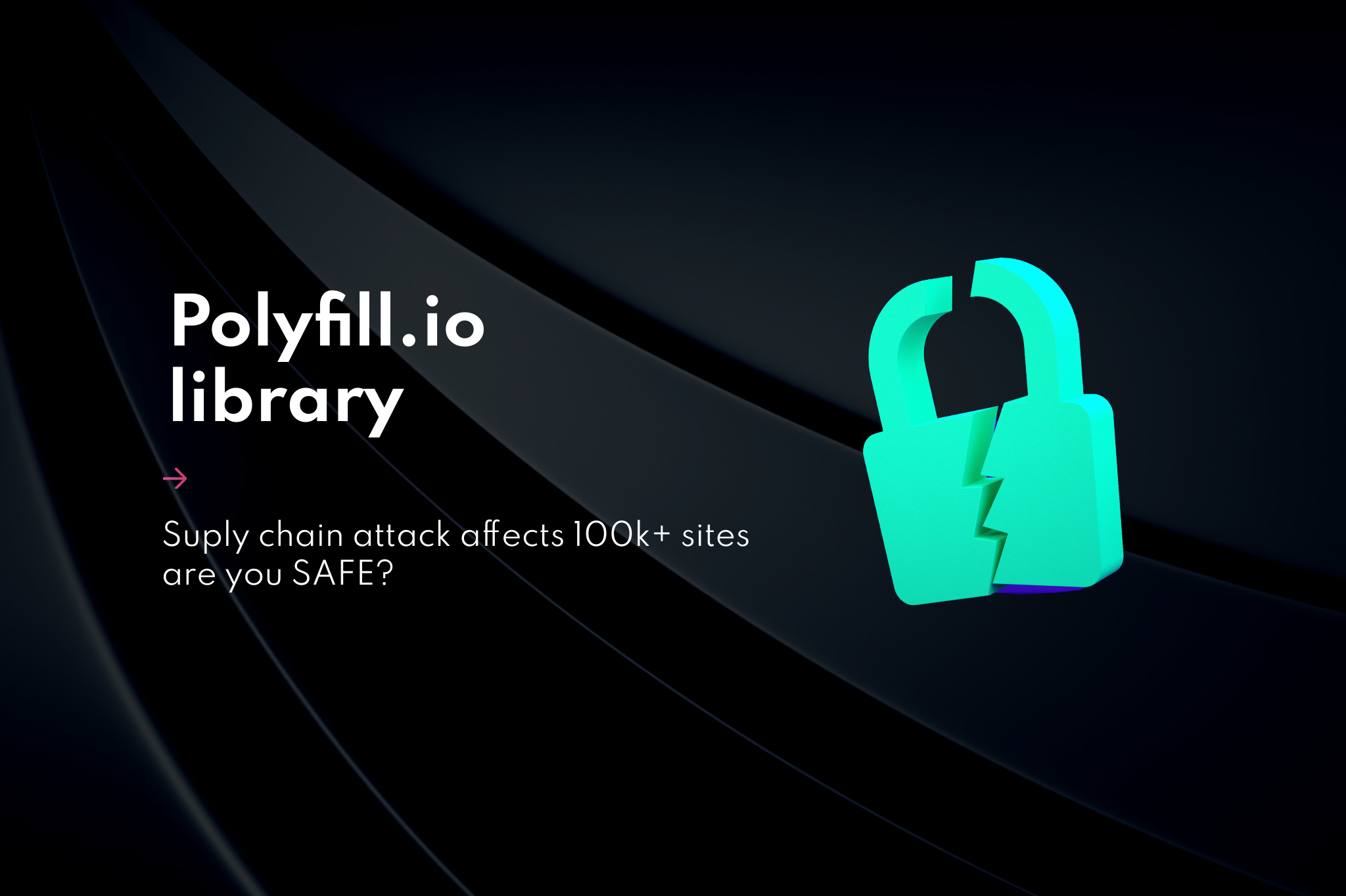Web development relies on various tools and libraries to ensure seamless functionality across different browsers. One critical tool in this arsenal is polyfill.io libraries. These libraries serve a fundamental role by providing modern web features to older browsers that do not support them natively. By doing so, developers can create applications that are both forward-compatible and accessible to users on outdated platforms.
However, the risk of supply chain attack has become a growing concern in the software development landscape. Supply chain attacks target the software dependencies and third-party services that developers rely on, introducing malicious code through seemingly legitimate updates or packages. These attacks can have far-reaching consequences, compromising the security of thousands of websites and their users.
This article delves into the potential risks associated with polyfill.io libraries, particularly in light of recent security concerns. We will also explore strategies to mitigate these risks, ensuring your web applications remain secure and dependable.
1. Understanding Polyfill.io Libraries
What is Polyfill.io?
Polyfill.io is an open-source library designed to provide support for older browsers that do not natively implement modern web standards. It works by dynamically generating code that mimics the functionality of newer JavaScript features, ensuring that web applications can run smoothly across different browser versions.
How Does Polyfill.io Work?
Polyfill.io intelligently detects the capabilities of the user’s browser and serves only the necessary polyfills. This tailored approach minimizes the performance impact on modern browsers while extending compatibility to legacy ones. Developers can include a single script tag in their HTML, and Polyfill.io takes care of the rest, delivering the required polyfills based on user-agent data.
Significance of Using Polyfills
Using polyfills is crucial for maintaining a seamless user experience across various browsers. Older browsers may lack support for essential JavaScript features like Promise, Fetch, and Array.prototype.includes. By incorporating polyfills, developers ensure their applications remain functional and accessible to a wider audience.
- Cross-Browser Compatibility: Polyfills help bridge the gap between different browser implementations, assisting in consistent behavior across platforms.
- Legacy Browser Support: Ensures that users with outdated browsers still have access to modern web functionalities.
- Ease of Implementation: With services like Polyfill.io, developers can effortlessly integrate necessary polyfills without manually managing them.
By understanding how Polyfill.io operates and its role in web development, we can appreciate its utility while also recognizing potential vulnerabilities associated with its use.
2. What happened?
Polyfill.io has been inadvertently serving malware through its content delivery network (CDN) for several months. This issue arose after the project’s open source maintainer sold the service to a company based in China. Following the acquisition, the integrity of Polyfill.io’s CDN was compromised, leading to the distribution of malicious code to unsuspecting users.
Risk Factors Introduced:
- Malware Injection: There have been instances where malware was injected into websites using polyfill.io, with malicious scripts redirecting mobile users to fraudulent domains such as www.googie-anaiytics.com.
- Trust and Transparency: When a library is controlled by an entity outside local jurisdiction, there’s an inherent risk regarding the integrity and transparency of updates and patches.
- National Security Concerns: Given the geopolitical climate, libraries managed by foreign companies can be viewed skeptically, with fears that they may be leveraged for cyber espionage or other malicious activities.
Real-World Impacts:
- Google blocked Google Ads for eCommerce sites using polyfill.io due to security concerns.
- Cloudflare took proactive measures by rewriting cdn.polyfill.io to its version, aiming to protect its users from potential threats.
These incidents underscore the need for vigilance in managing dependencies within the software supply chain, highlighting the importance of understanding who controls these critical libraries.
3. What to do next?
Polyfill.io libraries are no longer necessary for modern browsers. The majority of today’s browsers natively support the functionalities that polyfills were designed to provide. Here’s how you can adapt:
Remove Polyfill.io Libraries
Eliminating polyfill.io libraries from your web applications reduces the risk of potential exploits. Modern browsers like Chrome, Firefox, and Safari have progressively integrated most of the features that polyfills aimed to emulate.
Safer Alternatives
For those who still need to support legacy browsers, consider safer alternatives:
- CloudFlare: Offers a secure and reliable polyfill service through cdnjs.
- Fastly: Provides robust options for polyfill.io users detailed in their community post.
Avoid Polyfill.io
Given the recent controversies and vulnerabilities, avoiding polyfill.io is essential. The injection of malware into the library underscores the risks associated with using compromised software components.
4. The Cloudflare and Namecheap Answers to the Threat
Cloudflare’s Response
Cloudflare acted quickly to reduce the impact of supply chain attacks associated with polyfill.io libraries. They recognized the potential risks and implemented a rewrite rule for cdn.polyfill.io, redirecting it to their secure version. This proactive measure helped protect many websites from harmful payloads that could take advantage of weaknesses introduced through compromised libraries.
Namecheap’s Precautionary Measures
Namecheap temporarily stopped supporting polyfill.io domains. This decisive action was taken to prevent any additional vulnerabilities that could arise from using these libraries. By pausing support, Namecheap effectively decreased the risk of DDoS attacks and other security threats that can have serious consequences for businesses and websites.
5. Conclusion
It is now more important than ever to address supply chain security risks in software development. The case of polyfill.io libraries shows the vulnerabilities that come with relying on third-party code, especially from sources that may not be trustworthy. Supply chain attacks can greatly impact businesses and websites, putting user trust and data security at risk.
To ensure the reliability of your dependencies, here are some crucial steps you can take:
- Stay informed: Regularly keep track of news about vulnerabilities in the libraries you use.
- Update dependencies: Always keep your libraries and frameworks up to date with the latest security patches.
- Use trustworthy sources: Choose reputable alternatives like Cloudflare or Fastly for your polyfill requirements.
- Implement monitoring tools: Make use of services such as Sansec’s free CSP monitoring to have continuous visibility into your code.
Being vigilant is key to maintaining strong security measures. By actively managing your dependencies and staying ahead of potential threats, you are able to protect your applications and users from the ever-changing world of supply chain attacks.





